|
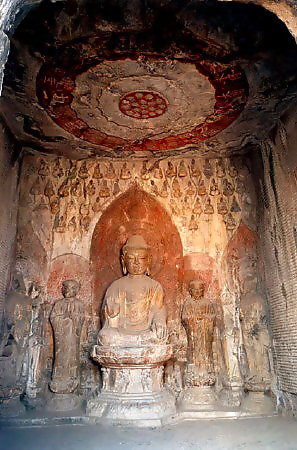 Overview Overview
Luoyang with a history of nearly 5,000 years is located in the western part of Henan Province and to the south of the middle reaches of the Yellow River. It has a population of 800,000 in the city proper.
The ancient city of Luoyang is one of the seven ancient capitals of China and is included in a list of famous historical and cultural cities of China. Archaeologists have recently confirmed that Luoyang was the capital during the reign of 96 emperors in 13 dynasties over a period of 1,529years. The layout of Luoyang during the Xia (21th -16th century B.C.), Shang (16 th-11th Century B.C.), Zhou (11th century -256 B.C.), Han-Wei (206B.C.-220A.D.), and Sui-Tang dynasties (581-907 A.D.), displayed in Luoyang Municipal Museum, is known as 'Five capitals Assembling in Luoyang'. Today there are six major historical and cultural sites here under state protection. The Longmen Grottoes are one of the three major treasure houses of stone carving in China. The Baima Temple (Whit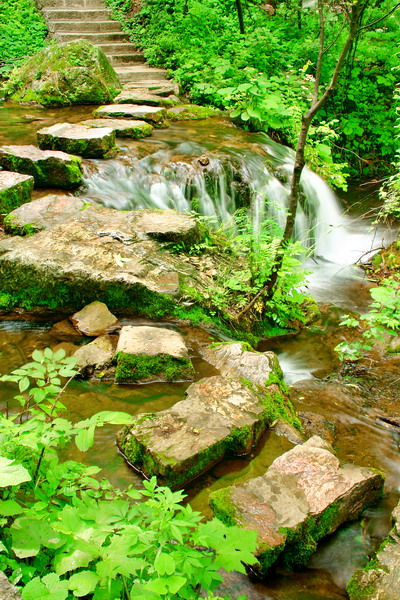 e Horse Temple) was the first Buddhist temple established by the government after Buddhism started to spread in China. The 'Forest of Guan Yu' is one of the three major memorial temples of Lord Guan. Mount Mangshan in the north suburbs is the site of China's largest ancient tomb group that consists mainly of imperial mausoleums, the oldest dating back to the Eastern Zhou Dynasty. e Horse Temple) was the first Buddhist temple established by the government after Buddhism started to spread in China. The 'Forest of Guan Yu' is one of the three major memorial temples of Lord Guan. Mount Mangshan in the north suburbs is the site of China's largest ancient tomb group that consists mainly of imperial mausoleums, the oldest dating back to the Eastern Zhou Dynasty.
Luoyang boasts beautiful natural scenery, being surrounded by the Yellow River, the scenic Xiaolangdi Reservoir and the tomb of Emperor Guangwu of the Han Dynasty (206B.C.-220A.D.) to the north; Baiyun state Forest park and a limestone cave in the Jiguan Mountain that is called 'the First Cave in North China' to the south; Songshan Mountain, one of the five sacred Mountains, and the shaolin Monastery to the east. The world-renowned Luoyang peony has been selected as the flower of the city.
Attractions
Longmen Grottoes 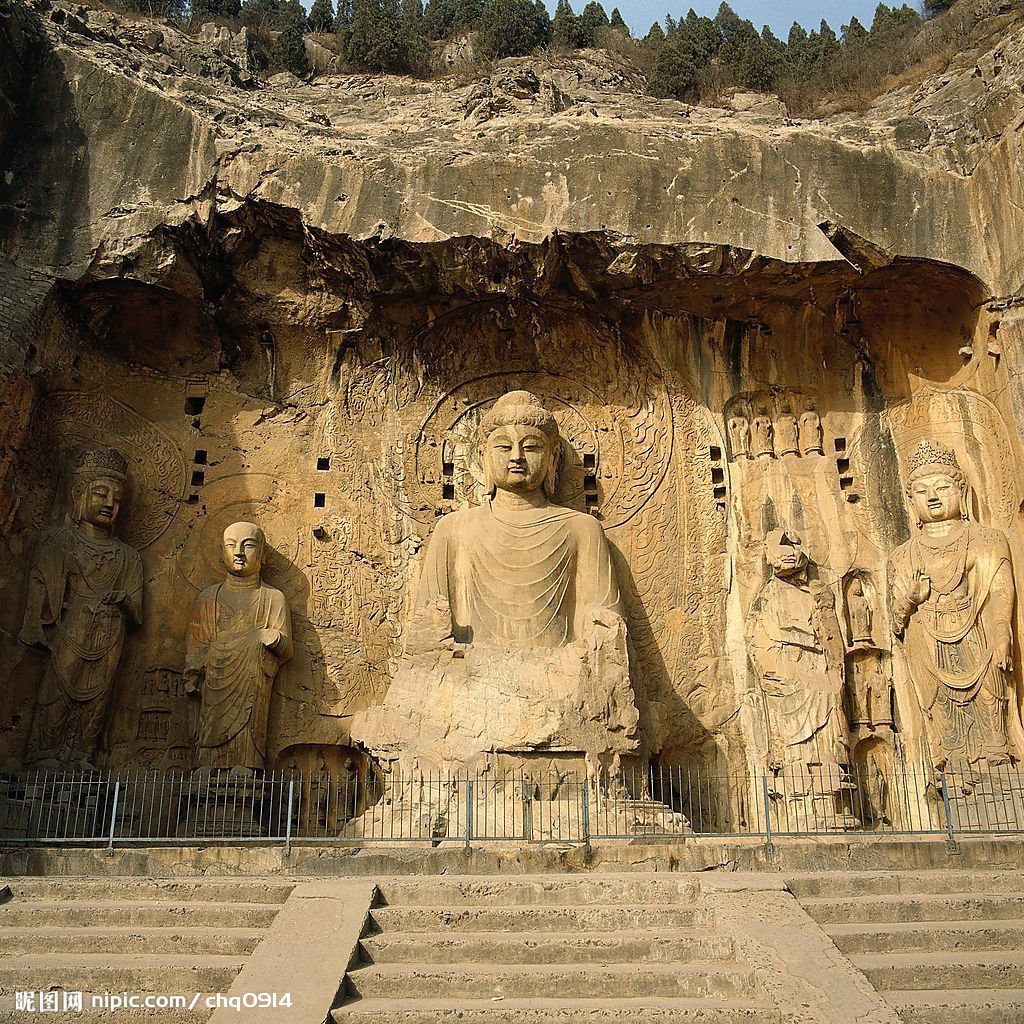
A world heritage site named in 2000, the sculptures of the Longmen Grottoes are an outstanding manifestation of human artistic creativity. The Longmen Grottoes illustrate the perfection of a long-established art form, which was to play a highly significant role in the cultural evolution of this region of Asia.
Located along the banks on Yihe River in Luoyang, Henan Province, the Longmen Grottoes are important cultural relics under state protection. Along the cliffs, there are more than 2100 niches, 2,800 inscribed stone tablets. Buddhist pagodas and nearly 110,000 Buddhist images and statues still exist today.
Luoyang Mus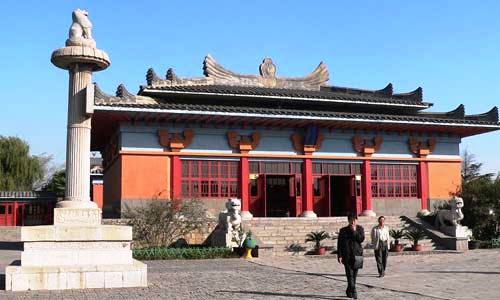 eum of Ancient Tombs eum of Ancient Tombs
The museum is located on top of Mangshan Hill to the north of Luoyang City. Opened to tourists in 1987, it has 25 typically restored ancient tombs ranging from the Western Han to the Song dynasties. Its floor area is 8,200 square meters. The museum is underground and basically consists of brick-lined vaults with painted mural, carvings and burial items that were discovered when the tombs were excavated. Therefore, it is the only ancient tomb museum in China.
Shaolin Temple
Shaolin Temple in Dengfeng County, Henan Province, is known in and outside of China for Shaolin Wushu (martial arts). The temple was built in 495, the 19th year of the reign of Emperor Xiaowen of the Northern Wei Dynasty. 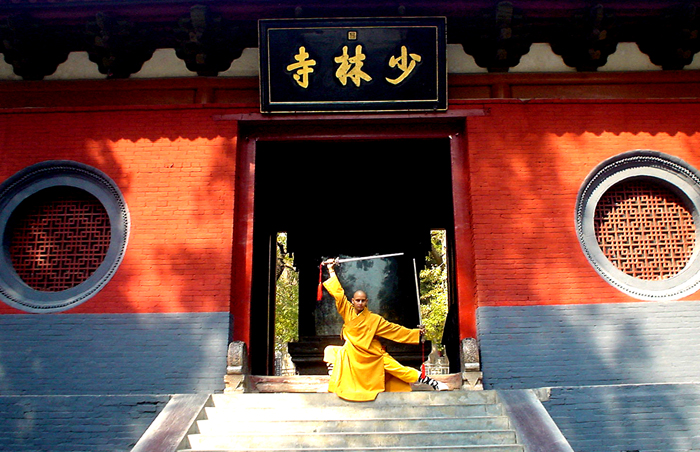
Shortly after, according to tradition, Boddhidarma, an Indian monk credited with the founding of Chan (Zen) Buddhism, came to live here, after visiting the emperor in Nanjing, then crossing the Yangtze River on a reed. At Shaolin he sat motionless for nine years facing a wall in a state of illumination. He was the first to practice what is now known as Shaolin martial arts. His limbs had become stiff from the long periods of sitting still and facing the cave wall, and he felt great discomfort. He also noticed that the monks were falling asleep during meditation and that their health was deteriorating, so he invented an exercise of eighteen movements, now known as the Eighteen Routines of Shaolin Martial Arts, imitating the pounce of the tiger, the climb of the monkey, and the jump of the leopard.
About 300 meters west of the Shaolin Temple is the Forest of Dagobas: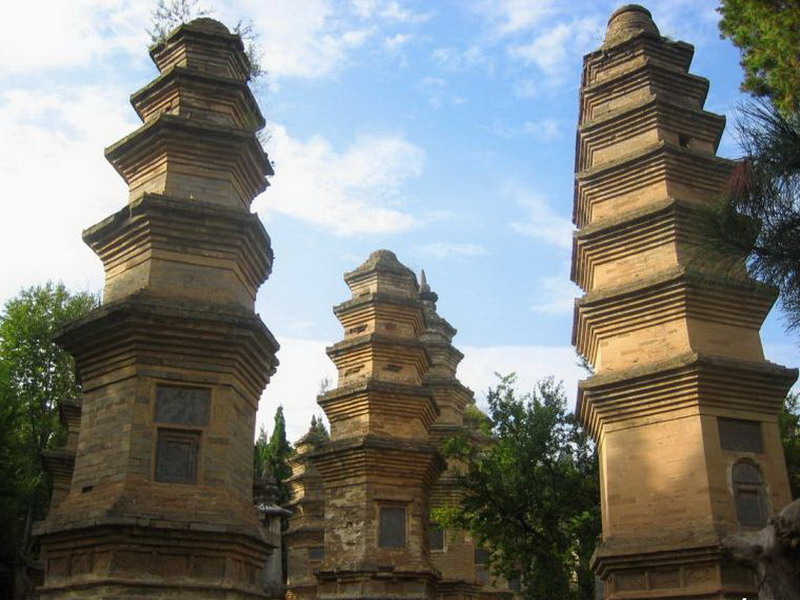
In accordance with the Buddhist system, pagodas were built there to keep the remains of the deceased abbots and other eminent monks, and stone table inscribed with the merits and virtues of the dead were erected. It has 231 Dagobas built during the 1,200 years after 791, the eleventh year of the reign (780-805) of Emperor Dezong of the Tang Dynasty. The form and size of the pagodas bear the influences of the times and show the ranks of the dead during their lifetimes and the economic situation at the temple. The pagodas vary in appearance and are from one to seven stories high, the highest being 15 meters.
White Horse Temple 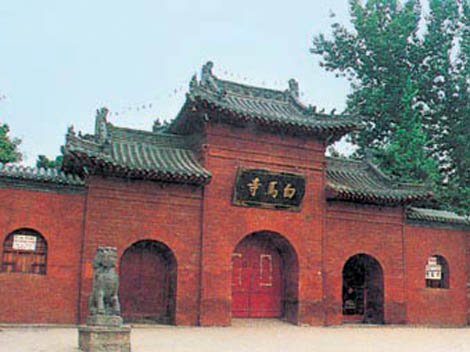
12km east of Luoyang, founded in the year of 68 AD, the White Horse Temple was the first Buddhist temple constructed on Chinese soil.
Legend says that the Emperor Mingdi of the Eastern Han dreamed of a golden figure with the sun and moon behind its head. Two monks sent to search for the origin of the dream reached India and returned riding white horses with two Indian monks in tow, and a bundle of sutras. This temple was built to honor them. Today, Ming and Qing structures stand at the site of the original temple with two stone horses standing on either side of the entrance. Home to a thriving community of monks, including a few Westerners, the White Horse temple is primarily a place of worship rather than a tourist attraction, and over-inquisitive visitors are tactfully but firmly pointed in the right direction.
Dining
Water Banquet
Luoyang Water Banquet (Luoyang Shuixi, or flowing banquet), also called sou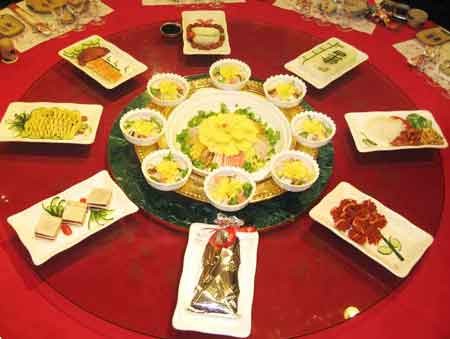 p banquet, is not simply a drinking test, but one of the most traditional Chinese cuisines. The history of this local custom can be traced back over a thousand years. Luoyang is a city surrounded by mountains, and the weather here is cold and dry. In ancient time, people hardly got any fruit to enjoy, thus they invented various soup to make up the need of water. p banquet, is not simply a drinking test, but one of the most traditional Chinese cuisines. The history of this local custom can be traced back over a thousand years. Luoyang is a city surrounded by mountains, and the weather here is cold and dry. In ancient time, people hardly got any fruit to enjoy, thus they invented various soup to make up the need of water.
Unlike most meal customs in China, the dishes served in this banquet are brought one after another, like flowing water, hence the name 'Water Banquet'. And around one third of the dishes served are soup or semi-soup ones. There're 24 courses in the banquet, noted for its various soups with sour and spicy flavors.
Carp
Carp is arguably the most beloved dish in Luoyang. It is said that in the golden olden days 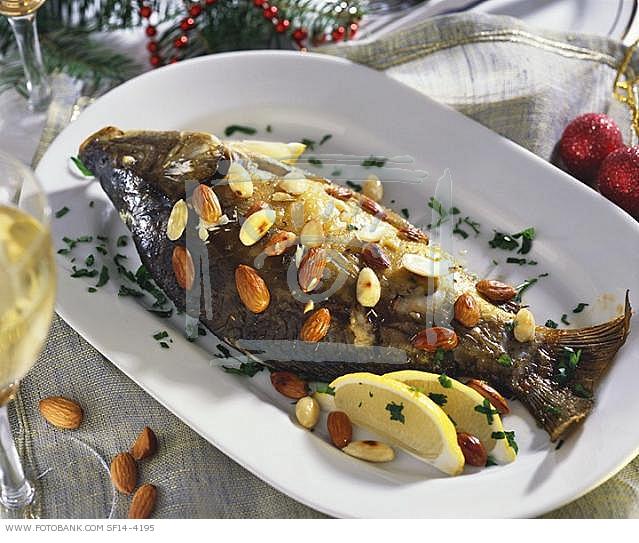 of Luoyang, when the capital was swathed in mystery and paved with gold, the fish itself could cost as much as a whole live ox! The dish itself is considered as a great delicacy in these parts, beloved for its tender flesh, nutritional benefits and the stylish design of each dish. of Luoyang, when the capital was swathed in mystery and paved with gold, the fish itself could cost as much as a whole live ox! The dish itself is considered as a great delicacy in these parts, beloved for its tender flesh, nutritional benefits and the stylish design of each dish.
The ideal carp dish is designed with subtle skill. The carp, with its head held high above the plate, is masterfully placed, seeming to be leaping over the cabbage 'gorge' at the side of the plate, a symbol of competitive spirit. The dish also is known in these parts as 'Carp Leaping over the Gorge'.
Zhangji Roast Chicken
Zhangji Roast Chicken (Zhangji kaoji) has long been a household course in the Luoyang area; it is quite a tasty dish. 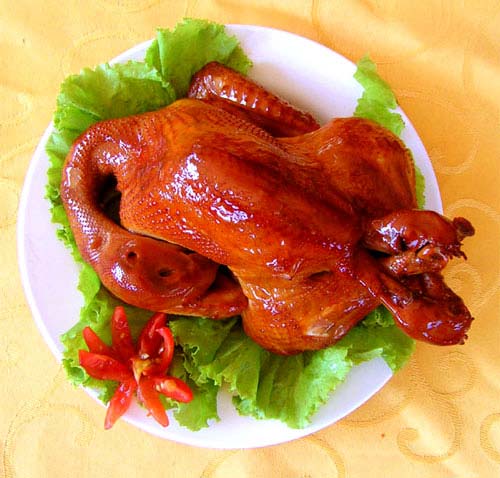
This version of the traditional roast chicken was allegedly first created through a secret recipe by a man with the surname Zhang. Nowadays this dish has become a popular dish and snack food for locals and travelers alike.
Sour and Spicy Soup
Although it may seem strange for us to place such a simple soup here, let it not be said in front of the locals that the Luoyang Sweet and Sour Soup (Luoyang bufangtang) is for simple taste buds. Great fervor is taken by the Luoyangese in draining large bowls of this eye-watering soup, a great way to clear the tubes.
The best of these soups are made with mushroom, laver, vermicelli, and dried shrimps placed in boiling water with starch, pepper and liberal quantities of vinegar.
Shopping
Luoyang has many local specialties ranging from fruits to handicrafts to replicas. Apples from Luoning County and pears from Mengjin County are sold throughout the country. The Palace Lantern is a special handicraft in Luoyang. It was once used to celebrate the founding of the Eastern Han Dynasty (25-220) in the imperial palace, hence its name. Craftsmen make the lanterns in various shapes including dragon head, butterfly and running horse. The lanterns are beautiful and easy to store, making excellent gifts.
Bronze-vessel making has a long history originating in the Xia Dynasty (21st-16th Centuries BC) in Luoyang. Locals now make thousands of reproductions of the ancient bronze vessels. Various bronze copies of wine cups, swords, chariots and horses are symbolic tourist souvenirs.
Tang Tri-colored glazed pottery is a Tang Dynasty (618-907) gem. The pottery used primarily three colors, red, green and yellow, hence its name. Most of these potteries were discovered in Luoyang. Locals have been making replicas of the Tang Tri-colors for hundreds of years in different shapes such as horses, camels and people. These vivid replicas make elegant presents for friends and relatives.
There are many shopping venues in the city. Shanghai Market Pedestrian Street in Jian Xi District is the place where fashionable clothes are sold. Wangcheng Park located on the middle Zhong Zhou Road is the best place to buy tourist souvenirs such as Tang Tri-colors, peony paintings and bronze wares. Nan Chang Road in Jian Xi District is the most beautiful avenue in Luoyang, offering a variety of things you may need.
|